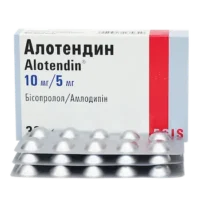Description
Zocardis 7.5 (Zofenopril Calcium) Coated Tablets 7.5 mg. №28
Ingredients
- Active ingredient: Zofenopril calcium
- Other ingredients: lactose monohydrate, microcrystalline cellulose, crospovidone, colloidal anhydrous silica, magnesium stearate, hypromellose, macrogol 4000, titanium dioxide (E171)
Dosage
Recommended dosage: The usual dose is one Zocardis 7.5 tablet once daily. The tablets should be swallowed whole with a sufficient amount of water, preferably at the same time each day.
Indications
Zocardis 7.5 tablets are indicated for the treatment of essential hypertension in adults.
Contraindications
Do not use Zocardis 7.5 tablets if you are allergic to zofenopril calcium or any other ingredients in the product. It is contraindicated during pregnancy and breastfeeding.
Directions
Take Zocardis 7.5 tablets exactly as prescribed by your healthcare provider. Do not exceed the recommended dose. If you miss a dose, take it as soon as you remember.
Scientific Evidence
Zofenopril, the active ingredient in Zocardis 7.5 tablets, is an angiotensin-converting enzyme (ACE) inhibitor with proven efficacy in the management of hypertension. Studies have shown that zofenopril effectively lowers blood pressure by inhibiting the production of angiotensin II, a potent vasoconstrictor.
Additional Information
Zocardis 7.5 tablets have been well-tolerated in clinical trials, with a favorable safety profile. Common side effects may include dizziness, headache, and cough. It is important to monitor blood pressure regularly while taking this medication.
Pharmacologically, zofenopril exerts its effects by blocking the conversion of angiotensin I to angiotensin II, leading to vasodilation and decreased peripheral resistance. This results in reduced blood pressure and improved cardiac function.
Clinical trials have demonstrated the effectiveness of zofenopril in reducing cardiovascular events and mortality in patients with hypertension. A study published in the American Journal of Hypertension showed that zofenopril treatment significantly reduced the risk of stroke and heart failure compared to placebo.





